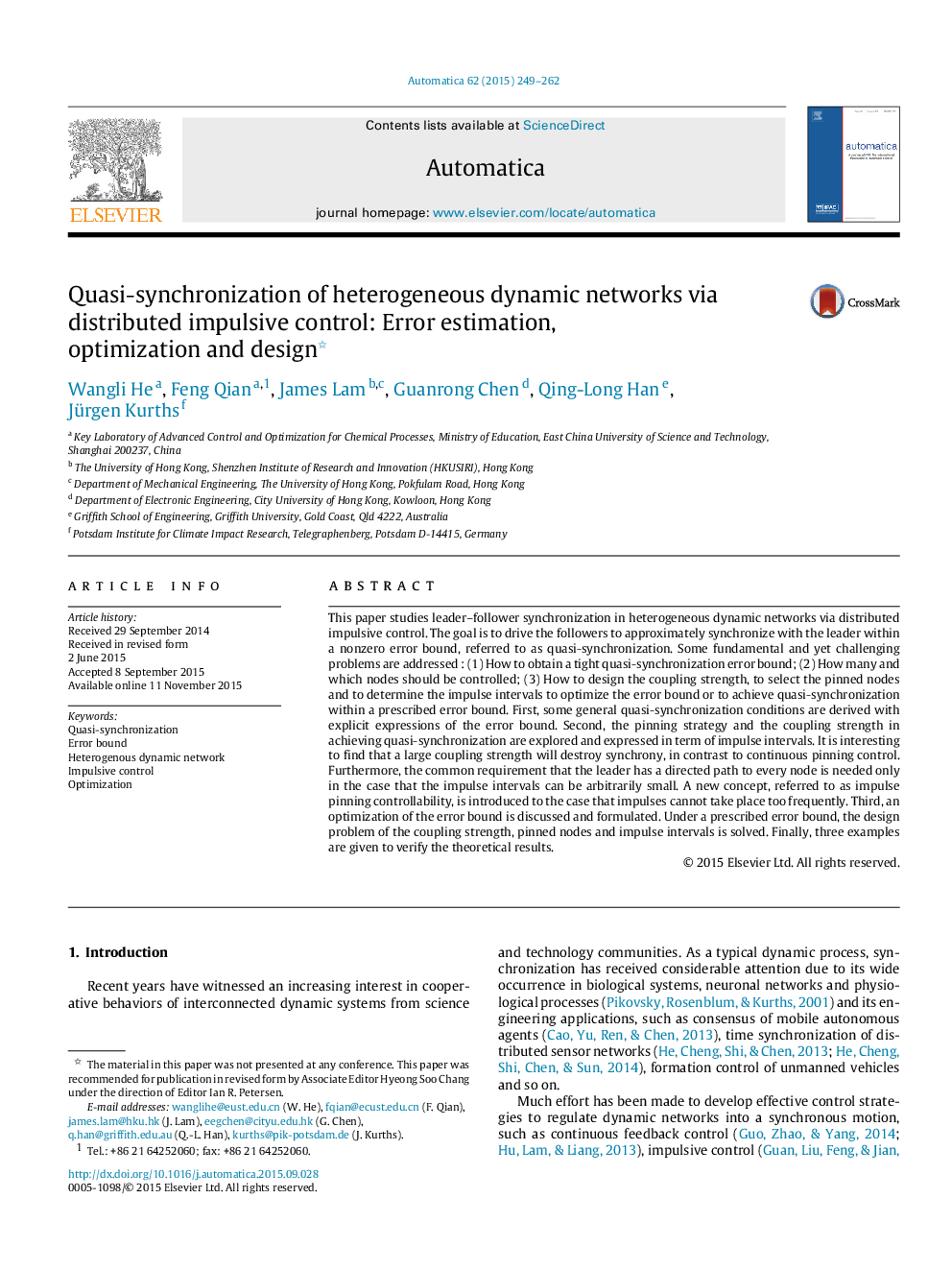| کد مقاله | کد نشریه | سال انتشار | مقاله انگلیسی | نسخه تمام متن |
|---|---|---|---|---|
| 695275 | 1460653 | 2015 | 14 صفحه PDF | دانلود رایگان |
This paper studies leader–follower synchronization in heterogeneous dynamic networks via distributed impulsive control. The goal is to drive the followers to approximately synchronize with the leader within a nonzero error bound, referred to as quasi-synchronization. Some fundamental and yet challenging problems are addressed : (1) How to obtain a tight quasi-synchronization error bound; (2) How many and which nodes should be controlled; (3) How to design the coupling strength, to select the pinned nodes and to determine the impulse intervals to optimize the error bound or to achieve quasi-synchronization within a prescribed error bound. First, some general quasi-synchronization conditions are derived with explicit expressions of the error bound. Second, the pinning strategy and the coupling strength in achieving quasi-synchronization are explored and expressed in term of impulse intervals. It is interesting to find that a large coupling strength will destroy synchrony, in contrast to continuous pinning control. Furthermore, the common requirement that the leader has a directed path to every node is needed only in the case that the impulse intervals can be arbitrarily small. A new concept, referred to as impulse pinning controllability, is introduced to the case that impulses cannot take place too frequently. Third, an optimization of the error bound is discussed and formulated. Under a prescribed error bound, the design problem of the coupling strength, pinned nodes and impulse intervals is solved. Finally, three examples are given to verify the theoretical results.
Journal: Automatica - Volume 62, December 2015, Pages 249–262
